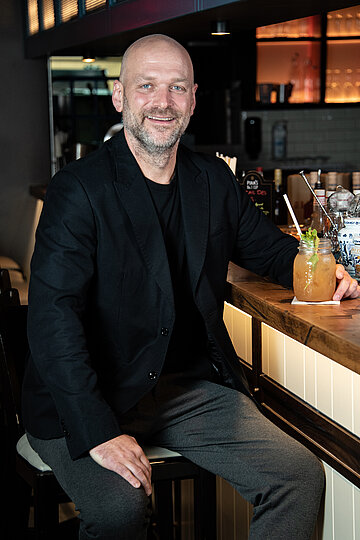Anyone who follows the trade press or is active in industry networks cannot avoid the topic of digitalisation. But how do small and large businesses put the topic into practice? Dennis Grote, Managing Director of yaya - World of Bowls, and Torsten Petersen, CEO of the Enchilada Group, answered our questions.
For which structures and processes do you use digital solutions in your own business?
Dennis Grote: Our concept allows guests to save time and money. Our developed yaya-bot cooks efficiently and maintains sustainably high-quality standards. All ingredients are used to the maximum, optimising food utilisation without waste! The bowls are refined by our employees. So the human factor still plays a role.
A big permanent and long-term problem in the catering industry is the lack of staff. Well-trained staff in particular are hard to find. The yaya-bot makes it possible to run a concept with consistent quality without being dependent on individual skilled staff. It also reduces personnel costs.
The ordering process is completely automated and cashless. This eliminates personnel costs in the service area and a daily closing is also no longer necessary. Furthermore, the completely digital ordering process enables the evaluation of each dish and the optimisation of prices and the menu on a 100% data basis. In addition, automatic inventory management and ordering of goods is made possible by AI.
Torsten Petersen: For years, the Enchilada Group has placed great emphasis on the integration of digital tools and technologies to simplify processes and use resources efficiently. This approach has been further intensified since the Corona crisis. One of the main drivers to push digitalisation was certainly a higher reaction speed due to the permanently changing requirements, closures and opening hours. The federal structure in Germany was a particular challenge for us as a company operating nationwide during the Corona phases. We therefore use digital tools, among other things, in the area of food and beverage menus, in merchandise management, personnel planning and all operational key figures. Here we rely on a real-time consolidation of all available data in our restaurants in order to implement targeted measures for marketing, staff planning and specials.
What are the advantages of digitalisation in general for restaurateurs? What problems can digital applications solve?
Torsten Petersen: The biggest advantage of digitalisation, besides the higher efficiency of standard processes, is the availability of data. Real-time data and its evaluation enable us to make data-based decisions. In a volatile environment with challenges such as the Corona crisis, which has not yet been overcome, high inflation and incalculable energy price developments, a quick response capability is an essential success factor to steer all our operations and the entire company well through this phase.
Dennis Grote: Digitalisation enables restaurateurs to work more cost-efficiently. Both in the area of labour costs and in terms of cost of goods, a well thought-out digitalisation ensures massive cost savings, without any disadvantages on the side of the guest experience.
Furthermore, complete digitalisation of the gastronomy enables a 360-degree view of guest behaviour, which was previously not possible in classic gastronomy and was only reserved for the large tech corporations. Which products are particularly popular? At what time of day? What price are guests willing to pay for them? What impact does the design and textual description of my product on the menu have on guest behaviour? If these data are used effectively, the result is not only satisfied guests, but also a higher per capita turnover.
What advice do you have for restaurateurs who want to push the topic of digitalisation in their own business?
Dennis Grote: Don't be afraid of negative guest feedback! For example, we were very afraid that cashless payment would meet with resistance. This was absolutely not the case. If you decide to digitise, then you should do it consistently. If guests have the option of choosing between a QR code and a classic menu, they will usually opt for the classic card out of habit. They quickly assume that the QR codes don't work.
Now is the time to think about new concepts. Gastronomy is undergoing an unprecedented upheaval. Especially here in Germany, we are still clinging to classic, cherished patterns, but the cost pressure and the lack of persuasion are making it difficult to find new concepts.
But everyone has to consider what is important and what exactly fits their own concept. That's why we also opted for an "inconspicuous" but efficient robot.
Torsten Petersen: In principle, we also assume that technology and automation will help the entire industry to meet structural challenges such as the shortage of skilled workers. Therefore, we will continue to increase the integration of technology, of course only where it seems sensitive and rational. It is important that we as an industry never lose our soul despite all the technical progress: Gastronomy lives from direct contact between people. From this point of view, there are therefore also limits to the use of technology.


